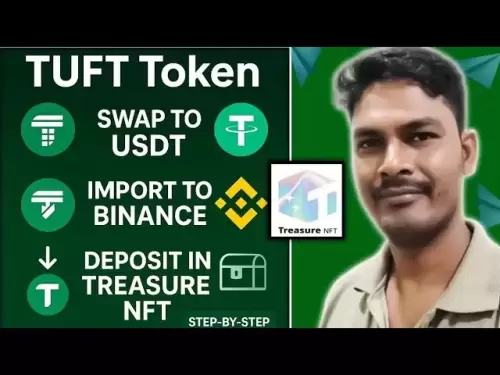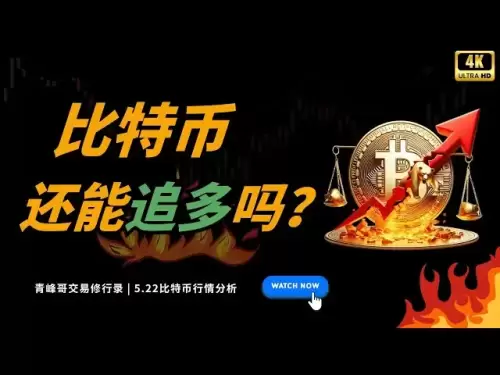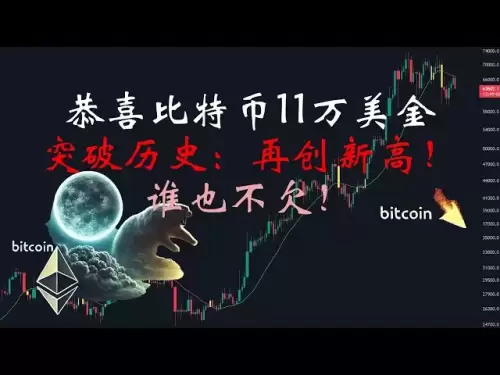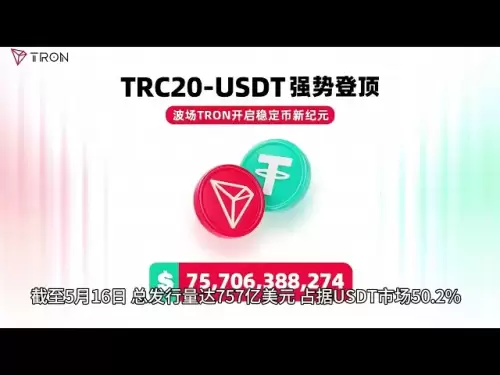-
 Bitcoin
Bitcoin $111,325.2168
2.08% -
 Ethereum
Ethereum $2,666.2932
3.87% -
 Tether USDt
Tether USDt $1.0002
0.01% -
 XRP
XRP $2.4327
1.31% -
 BNB
BNB $681.9858
2.68% -
 Solana
Solana $179.1127
3.93% -
 USDC
USDC $0.9997
0.01% -
 Dogecoin
Dogecoin $0.2414
4.06% -
 Cardano
Cardano $0.8034
4.89% -
 TRON
TRON $0.2776
1.86% -
 Sui
Sui $3.9288
-1.06% -
 Chainlink
Chainlink $16.8056
4.18% -
 Hyperliquid
Hyperliquid $32.2182
16.40% -
 Avalanche
Avalanche $25.0557
7.79% -
 Stellar
Stellar $0.3015
2.72% -
 Shiba Inu
Shiba Inu $0.0...01533
3.59% -
 Bitcoin Cash
Bitcoin Cash $434.9050
6.76% -
 Hedera
Hedera $0.2041
2.61% -
 UNUS SED LEO
UNUS SED LEO $8.8637
0.64% -
 Toncoin
Toncoin $3.1709
2.43% -
 Polkadot
Polkadot $4.9338
3.62% -
 Litecoin
Litecoin $99.2149
2.59% -
 Monero
Monero $400.2926
9.45% -
 Bitget Token
Bitget Token $5.2097
-0.56% -
 Pepe
Pepe $0.0...01444
3.52% -
 Pi
Pi $0.8132
-0.10% -
 Dai
Dai $0.9999
0.01% -
 Ethena USDe
Ethena USDe $1.0004
-0.04% -
 Bittensor
Bittensor $474.4408
11.01% -
 Uniswap
Uniswap $6.4668
2.17%
What is the Directional Movement Index (DWI)? How to use the DWI indicator?
The DMI's components include the Positive Directional Indicator (+DI), measuring positive price movement strength, and the Negative Directional Indicator (-DI), measuring negative price movement strength.
Feb 05, 2025 at 09:13 pm

Key Points
- The Directional Movement Index (DMI) is a technical indicator used to identify potential trend changes in financial markets.
- The DMI consists of three components: the Positive Directional Indicator (+DI), the Negative Directional Indicator (-DI), and the Average Directional Index (ADX).
- The +DI and -DI measure the strength of positive and negative price movements, respectively.
- The ADX indicates the overall trend strength.
- The DMI can be used to generate buy and sell signals, identify potential trend reversals, and measure trend momentum.
What is the Directional Movement Index (DWI)?
The Directional Movement Index (DMI) is a technical indicator developed by J. Welles Wilder in 1978. It is used to identify potential trend changes in financial markets by measuring the strength of positive and negative price movements. The DMI consists of three components:
- Positive Directional Indicator (+DI): Measures the strength of positive price movements.
- Negative Directional Indicator (-DI): Measures the strength of negative price movements.
- Average Directional Index (ADX): Indicates the overall trend strength.
How to use the DWI Indicator?
- Identify the Trend Direction:
- First, determine the trend direction by comparing the +DI and -DI values.
- When the +DI is above the -DI, the trend is considered bullish.
- When the -DI is above the +DI, the trend is considered bearish.
- Determine Trend Strength:
- Calculate the ADX value to measure the overall trend strength.
- An ADX value above 25 indicates a strong trend.
- An ADX value below 25 indicates a weak trend.
- Generate Buy and Sell Signals:
- Buy signal: When the +DI crosses above the -DI and the ADX is above 25.
- Sell signal: When the -DI crosses above the +DI and the ADX is above 25.
- Identify Potential Trend Reversals:
- Look for divergences between the price action and the DMI indicators.
- For example, if the price is making higher highs but the +DI is making lower highs, it may indicate a potential trend reversal.
- Measure Trend Momentum:
- The slope of the ADX line can indicate the momentum of the trend.
- A rising ADX line indicates increasing momentum, while a falling ADX line indicates decreasing momentum.
FAQs
- What is the Directional Movement Average (DMA)?
The Directional Movement Average (DMA) is a variation of the DMI indicator that smooths out the +DI, -DI, and ADX values. It is often used to reduce noise and make the indicator more readable.
- How do you calculate the DMI?
The DMI is calculated using the following formulas:
- +DI = 100 * (Smoothed Positive Range / Average True Range)
- -DI = 100 * (Smoothed Negative Range / Average True Range)
- ADX = 100 (((+DI - -DI) / (+DI + -DI)) 0.5)
- What are the limitations of the DMI?
The DMI is a trend-following indicator, which means it can lag behind the market. It is also subject to false signals in ranging markets.
Disclaimer:info@kdj.com
The information provided is not trading advice. kdj.com does not assume any responsibility for any investments made based on the information provided in this article. Cryptocurrencies are highly volatile and it is highly recommended that you invest with caution after thorough research!
If you believe that the content used on this website infringes your copyright, please contact us immediately (info@kdj.com) and we will delete it promptly.
- Bitcoin soared to a new all-time high above $111,000
- 2025-05-22 23:40:13
- Pepe and Influencer Pepe (INPEPE): The Rumors, Shiba's History, and Why INPEPE Could Be the Next Big Winner
- 2025-05-22 23:40:13
- Influencers Are Flocking to This Next-Gen Meme Coin, Delivering 100x Returns to Early Investors
- 2025-05-22 23:35:28
- Could Solaxy Grow , But Is It Really What Solana Needs?
- 2025-05-22 23:35:28
- Internet Computer Protocol (ICP) Has Gained 6.7% in the Past 24 Hours
- 2025-05-22 23:30:13
- Bitcoin (BTC) Hits New All-Time High of $111,861, Lifting Cardano (ADA) Price
- 2025-05-22 23:30:13
Related knowledge

What is Ethereum’s Slashing mechanism and how to punish malicious behavior?
Feb 20,2025 at 03:08am
Key PointsOverview of slashingDifferent types of slashing in EthereumIncentives and consequences of slashingIdentifying and reporting slashed validatorsOngoing discussions and potential improvementsEthereum's Slashing Mechanism: Punishing Malicious BehaviorEthereum's slashing mechanism is an essential tool for ensuring network security and punishing mal...

What is the verifier node of Ethereum and how to become a verifier?
Feb 19,2025 at 06:00pm
The Verifier Node of Ethereum: A Comprehensive GuideKey Points:What is a Verifier Node?How to Become a Verifier NodeResponsibilities and Rewards of a Verifier NodeMinimum Requirements for Becoming a Verifier NodePotential Difficulties in Running a Verifier Node1. What is a Verifier Node?A Verifier Node is an independent entity on the Ethereum network th...

What is Ethereum’s staking, and how to participate and earn money?
Feb 19,2025 at 04:37pm
Key Points:Understanding Ethereum's Staking MechanismSteps to Participate in StakingBenefits and Rewards of StakingSecurity and Risk ConsiderationsTechnical Requirements and Hardware OptionsPotential Challenges and Troubleshooting TipsFAQs on Ethereum StakingWhat is Ethereum's Staking?Proof-of-Stake (PoS) is a consensus mechanism used in blockchain netw...

What is Ethereum’s DAO (Decentralized Autonomous Organization) and how does it work?
Feb 20,2025 at 03:12am
Key PointsDefinition and Structure of a DAOGovernance and Decision-Making in DAOsBenefits and Use Cases of DAOsChallenges and Limitations of DAOsWhat is Ethereum's DAO (Decentralized Autonomous Organization) and How Does It Work?Definition and Structure of a DAOA Decentralized Autonomous Organization (DAO) is an innovative governance and management fram...

What is Ethereum's multi-signature wallet and how to improve security?
Feb 20,2025 at 02:18pm
Key Points:Understanding the Concept of a Multi-Signature WalletBenefits and Drawbacks of Multisig WalletsRequirements for Setting Up a Multisig WalletStep-by-Step Guide to Generating a Multisig WalletImplementing Strategies for Enhanced Security1. Understanding the Concept of a Multi-Signature WalletA multi-signature (multisig) wallet in the Ethereum e...

What is Ethereum's oracle and how to provide data for smart contracts?
Feb 21,2025 at 01:30am
Key Points:Understanding the concept of oracles in EthereumExploring different types of oraclesDetailed guide on how to provide data for smart contractsAddressing potential challenges and considerationsWhat is Ethereum's Oracle?Oracles are crucial components in the Ethereum ecosystem, enabling smart contracts to access real-world data and off-chain even...

What is Ethereum’s Slashing mechanism and how to punish malicious behavior?
Feb 20,2025 at 03:08am
Key PointsOverview of slashingDifferent types of slashing in EthereumIncentives and consequences of slashingIdentifying and reporting slashed validatorsOngoing discussions and potential improvementsEthereum's Slashing Mechanism: Punishing Malicious BehaviorEthereum's slashing mechanism is an essential tool for ensuring network security and punishing mal...

What is the verifier node of Ethereum and how to become a verifier?
Feb 19,2025 at 06:00pm
The Verifier Node of Ethereum: A Comprehensive GuideKey Points:What is a Verifier Node?How to Become a Verifier NodeResponsibilities and Rewards of a Verifier NodeMinimum Requirements for Becoming a Verifier NodePotential Difficulties in Running a Verifier Node1. What is a Verifier Node?A Verifier Node is an independent entity on the Ethereum network th...

What is Ethereum’s staking, and how to participate and earn money?
Feb 19,2025 at 04:37pm
Key Points:Understanding Ethereum's Staking MechanismSteps to Participate in StakingBenefits and Rewards of StakingSecurity and Risk ConsiderationsTechnical Requirements and Hardware OptionsPotential Challenges and Troubleshooting TipsFAQs on Ethereum StakingWhat is Ethereum's Staking?Proof-of-Stake (PoS) is a consensus mechanism used in blockchain netw...

What is Ethereum’s DAO (Decentralized Autonomous Organization) and how does it work?
Feb 20,2025 at 03:12am
Key PointsDefinition and Structure of a DAOGovernance and Decision-Making in DAOsBenefits and Use Cases of DAOsChallenges and Limitations of DAOsWhat is Ethereum's DAO (Decentralized Autonomous Organization) and How Does It Work?Definition and Structure of a DAOA Decentralized Autonomous Organization (DAO) is an innovative governance and management fram...

What is Ethereum's multi-signature wallet and how to improve security?
Feb 20,2025 at 02:18pm
Key Points:Understanding the Concept of a Multi-Signature WalletBenefits and Drawbacks of Multisig WalletsRequirements for Setting Up a Multisig WalletStep-by-Step Guide to Generating a Multisig WalletImplementing Strategies for Enhanced Security1. Understanding the Concept of a Multi-Signature WalletA multi-signature (multisig) wallet in the Ethereum e...

What is Ethereum's oracle and how to provide data for smart contracts?
Feb 21,2025 at 01:30am
Key Points:Understanding the concept of oracles in EthereumExploring different types of oraclesDetailed guide on how to provide data for smart contractsAddressing potential challenges and considerationsWhat is Ethereum's Oracle?Oracles are crucial components in the Ethereum ecosystem, enabling smart contracts to access real-world data and off-chain even...
See all articles
























































































